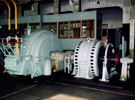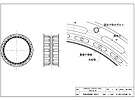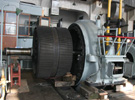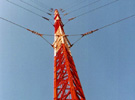Structure
Commercial and High Frequency Generators
General Commercial Generators are still used as electricity generators, driven by 50Hz in east Japan, and 60Hz in west Japan. The frequencies by such Commercial Generators are not high enough for generators to transmitting waves, thus High Frequency Generators are employed for such purposes.
When the Yosami Radio Transmitting Station was put into operation, the vacuum tubes, which in turn will be indispensable for wireless communication, had been just developed with less power, and they have to wait many more years before modern electronic devices such as semiconductors are available. Thus the High Frequency Generators, as big as the size of a power station, were employed for generating powerful waves to reach far away countries. In those days VLF was regarded fit for distant communication as to Europe, and it was expected to obtain the frequency of 17.442 kHz and high power to transmit.
Alexanderson-type High Frequency Generators developed in the U.S. then were able to generated the frequencies in need around 17.4kHz by themselves, its output power was 200kW, being not high enough for the purposes of the Yosami Radio Transmitting Station. Yet, the German High Frequency Generators, designed by Telefunken, and manufactured by AEG, met the requirements of Yosami and then installed.
The Telefunken’s High Frequency Generators do not directly generate the frequency of 17.442 kHz, and yet are capable of the high power output of 600kW, and have less frequency change. The initial frequency of 5.814 kHz is multiplied three times by the Tripler to obtain the target frequency of 17.442 kHz.
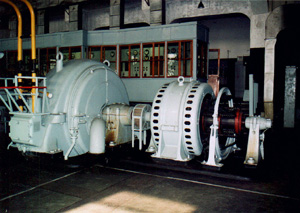
Transmitting by the High Frequency Generator is made by the movement of the revolving Rotator with magnetic poles and slots inside and the outer stationary Stator surrounded circularly by armature and exciting coils. When the Rotator with magnetic poles or teeth revolves, the electro motive force is generated by magnetic resistance changes occurred between the Stator and armature coils, thus the cycles are generated.
Exciting coils: Magnetic flux is generated by running electricity in coils
Magnetic flux: Mass of magnetic field lines, or the circuit current
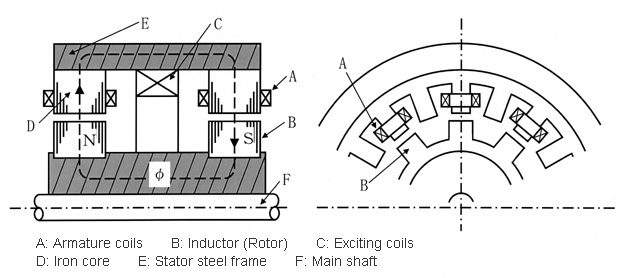
Electrical current running Exciting Coil C makes Inductor (Rotor) B magnetic. Inductor rotates and Stator is run by induction current on its Armature Coil A by the changes of magnetic poles. The number of magnetic poles and the revolution of Inductor determine the frequency of the induction alternate current.
Yosami’s High Frequency Generator, a type of alternate-current generator, has 256 magnetic poles, and revolves 1,360 rpm, thus the cycle is calculated as below:
256 magnetic poles x 1,360 rpm / 60 sec/m = c. 5,800 Hz.
The wave of 5,800 Hz is then multiplied three times in the Multiplier Circuit to obtain the target value of 17,442 Hz or 17.442 kHz of the Yosami Radio Transmitting Station.
German-made Telefunken’s High Frequency Generators
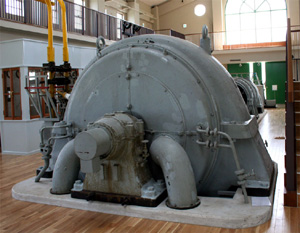
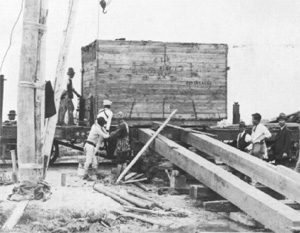
Transmitting equipment, such as the Telefunken’s High Frequency Generators, was shipped out from Germany and arrived at Yosami, Aichi, via Kobe port, in 1927. German engineers visited Yosami, south-east of Nagoya, Japan, for its installation. The construction cost for the Yosami Radio Transmitting Station was reportedly 5.5 million Japanese yen, at the vale of the time, and some 36 times of the construction cost of an elementary school built. Out of the total 1.1 million Japanese yen was spent for the transmitting equipment.
The outer frames of the High Frequency Generators are made by cast steel, and the steel plate wired exiting and output coils is attached inside. The Rotator has 256 magnetic poles or teeth, and the magnetic resistance from them generates the high frequency of 5.814 kHz at the output coils.






